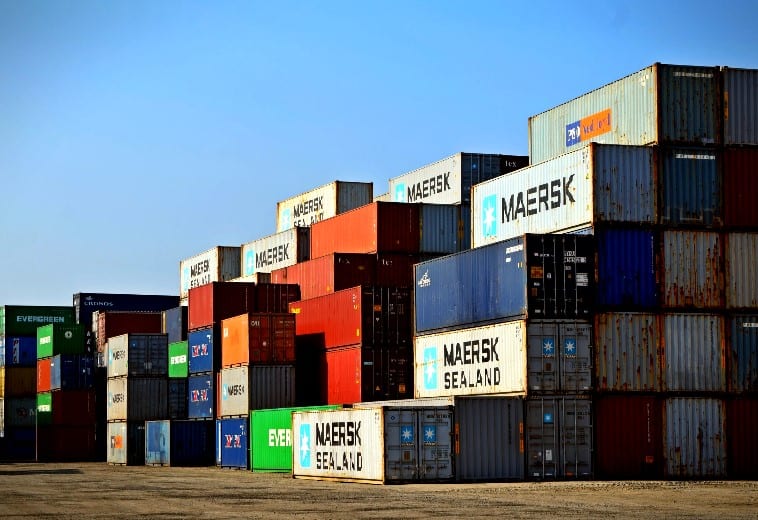How To Dramatically Improve Supply Chains With Disruptive Technologies
Are You Ready?
Progress should be the Product of the Process.
– Yohann Dafeu
Supply chain management is no longer only about reducing the cost of logistics – it is also about gaining a huge competitive advantage in today’s market. Yes, by disrupting the supply chain with cutting-edge innovations, management can equip their companies to:
- Manufacture increasingly customized products and solutions for their customers.
- Accurately forecast customer demand, and shift production speed accordingly.
- Pin-point exactly which activities or processes may result in incidents that can slow down the supply chain before they occur.
But to get this kind of results, first, you need to know what ‘innovations’ to implement. And in this article, my goal is to tell you exactly that.
Every company should strive to create a supply chain that’s more transparent, communicative and flexible. This will enable the company to push more innovative products to market faster – and at a lower cost, thus gaining an advantage over its rivals.
A prime example of a company that has succeeded in building such a supply chain is Amazon. By ‘upgrading’ their supply chain with the right innovations, they became capable of providing customers with a highly tailored shopping experience that was (and continues to be) cheaper and faster than its rivals. As a result, Amazon was able to gain a competitive edge with which they disrupted the complete retail sector of the United States.
The four key innovations they implemented in their supply chain (which you can adopt) are:
1. Big Data
Without data, managing a supply chain would be next-to-impossible. Data is used to find the cheapest supplier, gauge demand for a product, estimate shipping costs and much more.
The next step, naturally, is to progress towards using big-data.
Big data are large clusters of data that can not only be used to inform a company on current activities in the supply chain, but also to predict key future trends and patterns.
For example, weather and climate monitoring agencies have continuously collected data on how the weather unfolds around the world. As a result, they can make predictions as to what the weather in a specific location will be – based on weather data collected on that specific location for many years.
A company can incorporate this weather data in its supply chain to become more effective in choosing the safest and fastest shipping route – and thus, avoid weather-related incidents that can slow down the supply chain.
This is just one example of how big data can be used. Its applications are wide-ranging and can be used to increase worker performance, predict consumer demand, reduce quality-control incidents and much more.
2. Internet of Things (IoT)
Every company, no matter how effective at bringing their products to market – has room to improve the efficiency of their supply chain. And the next big thing which can assist in this goal is the Internet of Things (IoT) devices.
IoT devices are sensor-equipped devices that can transmit information. And their application in the supply chain is practically unlimited. IoT devices can inspect raw materials for quality, scan for manufacturing faults in the finalized products, keep an eye out for anyone tampering with to-be-shipped products and much more.
Also, IoT devices can provide continuous data on the ‘status’ of a particular area or component of the supply chain. For example, a health monitor can inspect worker health – and immediately let management know if an illness or injury is detected. Similarly, the condition of plants, animals, machinery, manufactured products, trucks, and other essential components can be monitored as well.
By getting this live-stream of data that is showcasing the performance of the complete supply chain, companies can take effective measures to improve their supply chain’s efficiency – without any guesswork.
3. Artificial Intelligence (AI) and Machine Learning
By feeding certain types of data to machines and computer systems, companies can make many components of their supply chain work efficiently – without the supervision of a human.
By giving machines and equipment autonomy, the supply chain will become faster, less-error prone and cheaper to manage.
For example, for shipping manufactured goods, companies can use self-driving trucks as a means of delivering them. Self-driving trucks will have an in-built navigation system that will have already learned the shipping routes via machine learning – and will use artificial intelligence to make complex decisions (like stopping when it sees a signal or changing routes when it detects an accident).
Similarly, using machine learning, special cameras connected to IoT devices can be used that can detect (based on temperature and movement) which machine is about to break down. It can then automatically call or send a text message to the relevant engineers informing them of the machine’s imminent breakdown. And that’s not all, thanks to machine learning and AI, the cameras can even detect which engineer arrived to fix the machinery – and whether their efforts succeeded or not.
These are but a few of the many applications of AI and machine learning. Ultimately, the main goal with it is to use it to reduce human-error in the supply chain and lessen the need for manual maintenance, both of which will result in more effective production and output.
4. Blockchain
It is not just data and automation that can improve a supply chain. There’s also a factor of conditions and agreements between the involved parties. If one party is unable to fulfill an agreement, it can slow down nearly all of the supply chain, especially if that agreement involves money.
Blockchain is a technology that can help solve such issues.
For one, it is a transparent and distributed ledger, meaning all involved parties can see the data in it. For example, a raw material supplier can ship a specific quantity of materials, upload its weight, quantity or other data to the blockchain network via IoT devices – and let the company know in a transparent fashion – whether the supply agreement has been fulfilled or not.
More importantly, the data stored in it is traceable and immutable, meaning everyone can see a history of changes made to that data. This prevents instances of information fraud from happening.
And that’s not all.
Blockchain also has a feature called smart contracts. With it, you can program a blockchain to execute a certain action when a condition is fulfilled.
For example, after a supplier has delivered the agreed-upon quantity of raw materials – and uploading its data to the blockchain, it can automatically execute a smart contract that transfers the payment amount to the supplier once the delivery has been approved.
This is possible because a blockchain can also process transactions, and that too much faster and cheaper than banks.
This means that due to the secure data storage capability of blockchain, combined with its smart contracts that can execute actions based on data uploaded to, plus its ability to process transactions has the potential to increase ‘trust’ between parties involved in the supply chain – and thus improving its efficiency.
Recap
- Big data, harnessed using IoT devices, can be used to learn more about the supply chain than ever before.
- This data can help train the components of the supply chain via machine learning to become artificially intelligent, thus increasing their autonomy and decreasing their human-dependence.
- Blockchain can securely transparently store the data and execute important agreements based on data for all involved parties.
- 301 views

